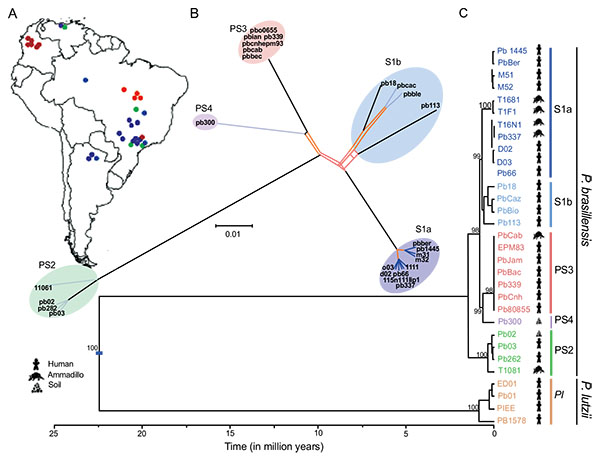Fig. (2)
Phylogeny and recombination in Paracoccidioides. Two methods were used to examine strain relationships originating from across South America (A): using 614,570 SNPs, including a phylogenetic network constructed with SplitsTree4 (B), and a Bayesian calibrated phylogeny constructed with BEAST (C); bootstrap values from maximum likelihood phylogeny constructed with RAxML were included for major subdivisions. Both methods show evidence of five distinct lineages in P. brasiliensis: S1 (blue), which is divided into two groups S1a (dark blue) and S1b (light blue), PS2 (green), PS3 (red), and the recently described PS4 (purple). Also, this phylogeny supports the divergence between P. brasiliensis and P. lutzii (Pl [orange]) as a different species. In addition, the phylogenetic network of P. brasiliensis suggests patterns of recombination (red branches).Note: from Muñoz JF, Farrer RA, Desardins CA, et al. Genome diversity, recombination, and virulence across the major lineages of Paracoccidioides. 2016. mSphere 1(5): e00213-16.


